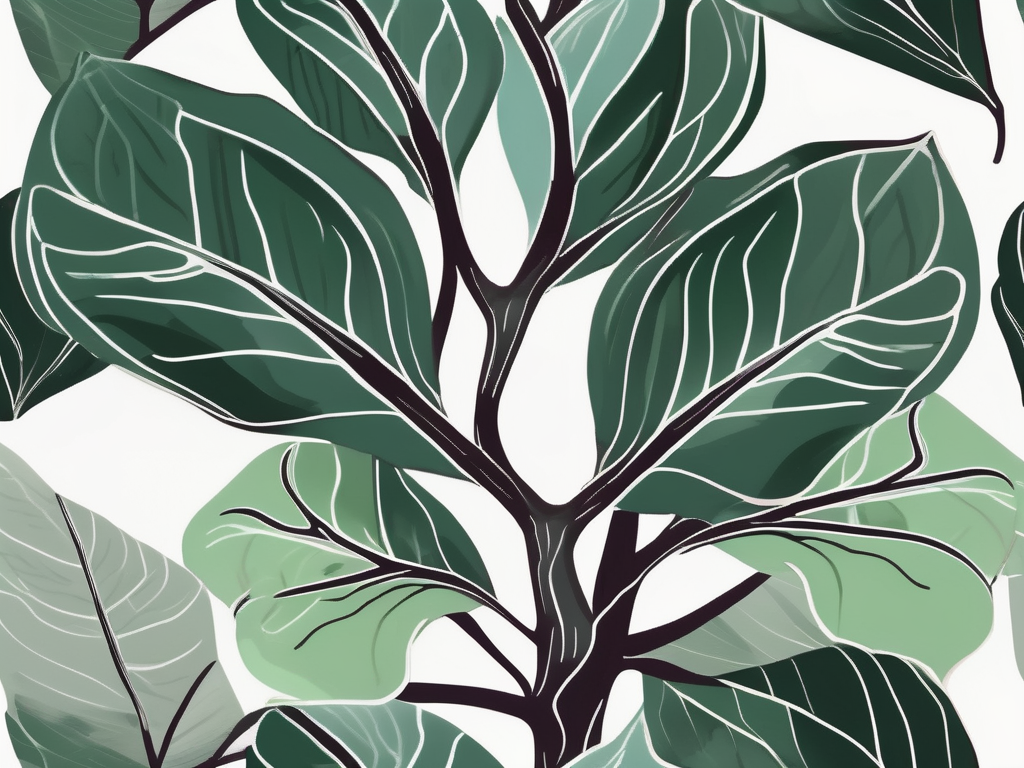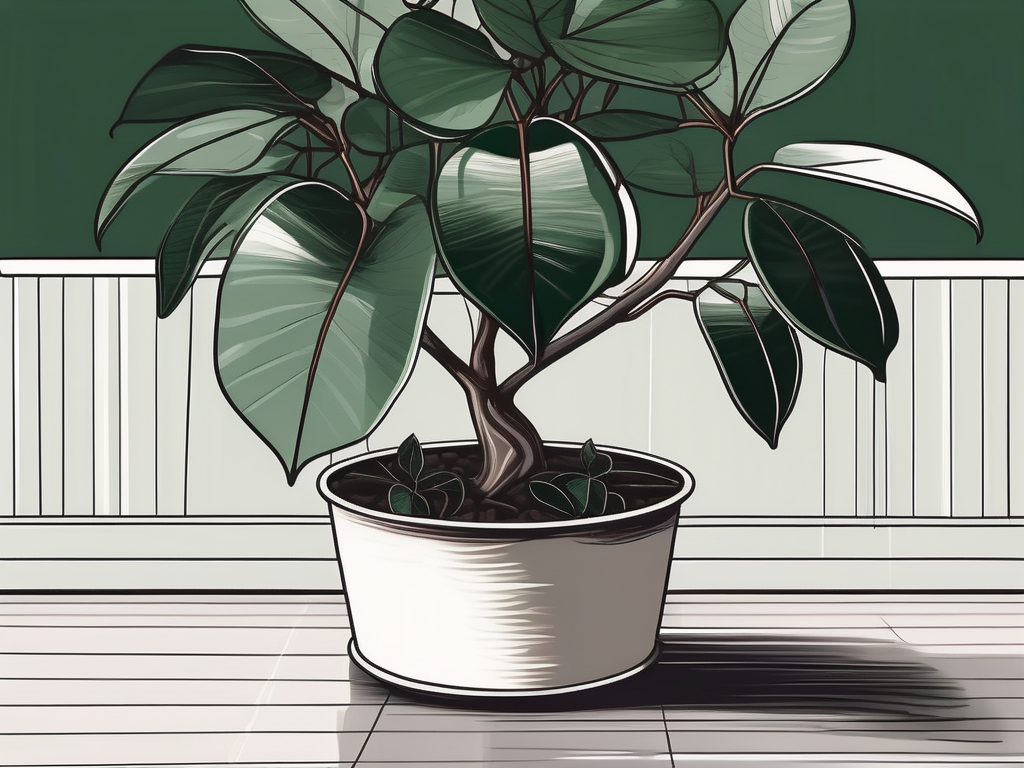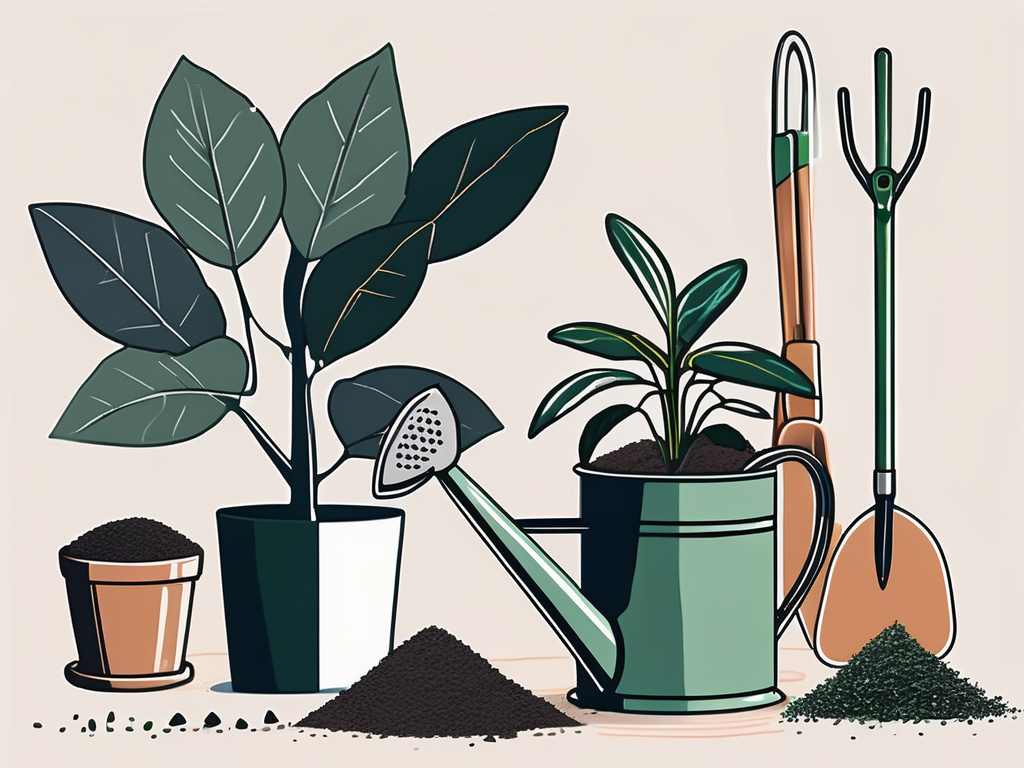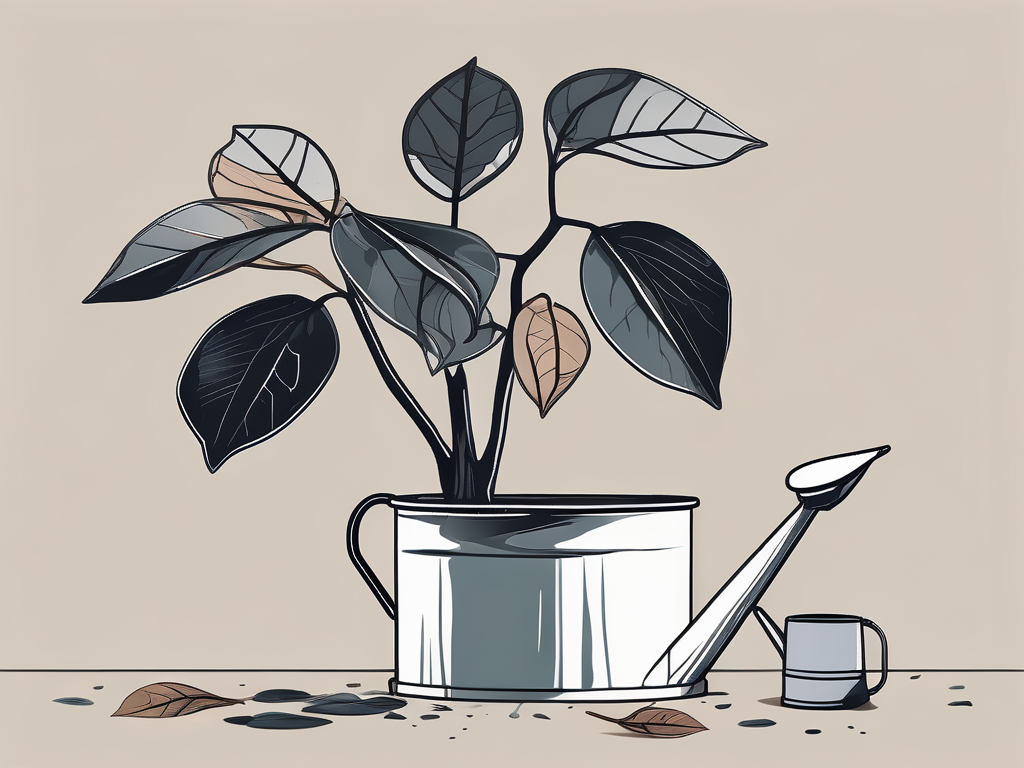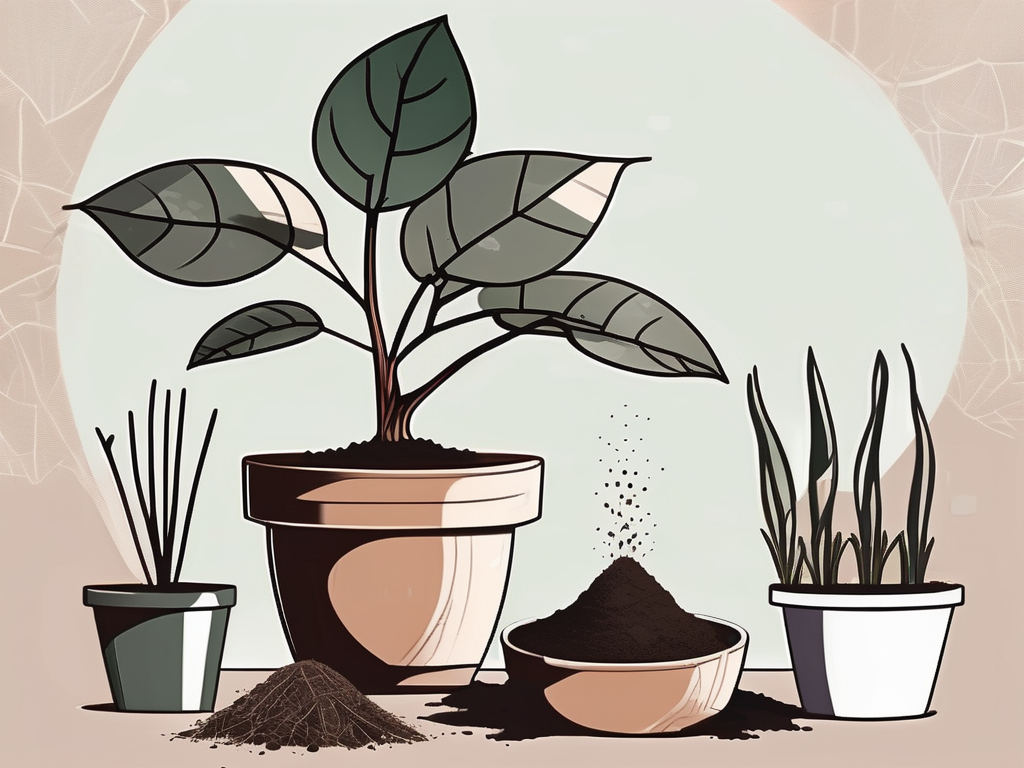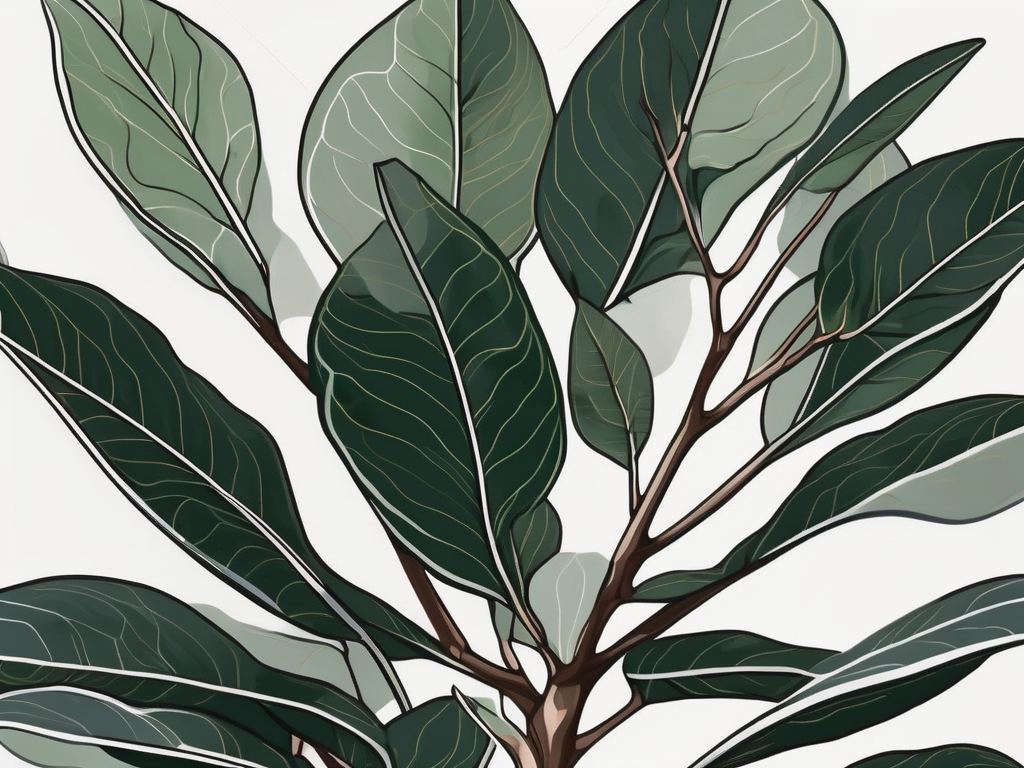
Rubber trees, with their glossy leaves and sturdy stems, are a favorite among houseplant enthusiasts. But while the striking foliage often steals the spotlight, the roots of the rubber tree have their own fascinating tale to tell. These roots not only support the plant but also play a crucial role in its growth and overall health.
In this article, we'll uncover the intriguing world of rubber tree roots. From understanding their function and growth patterns to learning how to care for them, we'll cover it all. So, if you're curious about what goes on beneath the surface of your rubber plant, keep reading!
The Role of Rubber Tree Roots
Roots might seem like the hidden heroes of the plant world, quietly doing their job beneath the soil. For rubber trees, the roots are essential for several reasons:
- Anchoring the Plant: Just like the foundation of a building, roots keep the rubber tree stable and upright.
- Nutrient Absorption: They absorb water and essential nutrients from the soil, which are crucial for photosynthesis and overall plant health.
- Storing Energy: Roots store energy in the form of carbohydrates, which the plant can use during periods of low light or stress.
Interestingly enough, rubber tree roots are quite adaptable. In their natural habitat, these trees can grow to impressive sizes, with roots spreading widely to support the towering tree above. However, when kept as houseplants, the roots adjust to the constraints of a pot, making them more manageable for indoor growth.
Understanding Root Growth Patterns
Rubber tree roots exhibit some unique growth patterns. Typically, they develop a fibrous root system, characterized by a network of thin, intertwined roots. This type of root system is highly effective in absorbing nutrients and water from the soil.
As the plant grows, the root system expands. This expansion is crucial for the plant’s health, as it allows the tree to access more nutrients and water. However, in a pot, this can lead to the roots becoming root-bound, a condition where they grow in tight circles due to limited space. If you've ever repotted a plant and noticed a dense mass of roots, you've likely encountered a root-bound plant.
To prevent this, it's important to periodically repot your rubber tree. This not only gives the roots more room to grow but also refreshes the soil, providing the plant with new nutrients. Generally, repotting every two to three years is a good rule of thumb for rubber trees.
Signs of Healthy Rubber Tree Roots
Checking the health of your rubber tree's roots can give you a good indication of the overall health of the plant. Here’s what to look for:
- Color: Healthy roots are typically white or light tan. If you notice black or mushy roots, this could be a sign of root rot.
- Firmness: Roots should be firm to the touch. If they feel slimy or soft, there might be a problem.
- Growth: Vigorous root growth is a good sign. If your plant seems to be growing more slowly than usual, it might be time to check the roots.
To check the roots, you can gently remove the plant from its pot and inspect the root ball. This should be done carefully to avoid damaging the roots. If you’re unsure, it might be helpful to consult with a local plant expert or reach out to a plant community online.
Preventing Root Problems
Root problems can be a headache for plant parents, but with a bit of knowledge, they can be avoided. Here are some common root issues and how to prevent them:
Overwatering
One of the most common issues with rubber trees is overwatering. When the soil is too wet, roots can suffocate and become susceptible to rot. To prevent this:
- Ensure your pot has drainage holes.
- Allow the top inch of soil to dry out between waterings.
- Use well-draining soil to prevent water from sitting around the roots.
Root Rot
Root rot is often a result of overwatering or poor drainage. If you suspect root rot, it’s important to act quickly:
- Remove the plant from its pot and inspect the roots.
- Trim away any black or mushy roots.
- Repot the plant in fresh, well-draining soil.
Remember, prevention is key. Regularly checking the moisture level of the soil and ensuring proper drainage will go a long way in keeping your rubber tree healthy.
Repotting: When and How
Repotting is an essential part of rubber tree care. But when is the right time to repot? And how do you do it without stressing the plant?
When to Repot
Rubber trees generally need repotting every two to three years. However, if you notice any of the following signs, it might be time to repot sooner:
- Roots growing out of the drainage holes.
- Water sitting on the surface of the soil for too long.
- The plant seems top-heavy or is tipping over.
How to Repot
Repotting might seem daunting, but with a little preparation, it can be a smooth process:
- Choose the Right Pot: Select a pot that’s one size larger than the current one, ensuring it has drainage holes.
- Prepare Fresh Soil: Use a well-draining potting mix, ideally one designed for houseplants.
- Gently Remove the Plant: Carefully remove the rubber tree from its pot. If it’s stuck, try tapping the sides of the pot to loosen the soil.
- Inspect the Roots: Check for any signs of root rot and trim away any damaged roots.
- Repot the Plant: Place the plant in the new pot, filling in around it with fresh soil. Be sure not to bury the trunk.
- Water Thoroughly: Give the plant a good drink, allowing excess water to drain away.
After repotting, your plant might need some time to adjust. It’s normal for it to look a bit droopy for a few days, but with proper care, it should bounce back in no time.
The Impact of Soil on Root Health
The type of soil you use can significantly affect the health of your rubber tree's roots. Here's why:
Rubber trees prefer a well-draining soil mix. This allows water to pass through easily, preventing the roots from sitting in waterlogged conditions. Many plant lovers opt for a mix of potting soil, perlite, and orchid bark to achieve this.
In addition to drainage, nutrients are another consideration. Over time, the nutrients in the soil get used up, which is why repotting and refreshing the soil is important. Some plant parents also choose to fertilize their rubber trees during the growing season (spring and summer) to provide an extra nutrient boost.
Avoid using heavy garden soil, as it tends to retain too much moisture and can compact over time, limiting root growth. Instead, stick to a mix that promotes aeration and drainage, giving your rubber tree the best chance to thrive.
Supporting Healthy Root Growth
Encouraging healthy root growth is all about providing the right conditions and care. Here are some tips to keep your rubber tree's roots in top shape:
- Water Wisely: Avoid overwatering by allowing the soil to dry out slightly between waterings.
- Choose the Right Pot: Ensure your pot has adequate drainage holes and is the right size for your plant.
- Provide Adequate Light: While rubber trees can tolerate low light, they thrive in bright, indirect sunlight.
- Monitor Temperature and Humidity: Keep your plant in a warm environment, ideally between 60-75°F, and maintain moderate humidity.
- Fertilize During Growing Season: Use a balanced fertilizer every month during spring and summer to support growth.
By paying attention to these factors, you’ll be supporting not just the root health of your rubber tree, but its overall vitality and growth.
Common Myths About Rubber Tree Roots
There are a few misconceptions about rubber tree roots that can lead to confusion. Let’s set the record straight on a couple of them:
Myth 1: Rubber Tree Roots Will Overtake Your Home
While it’s true that rubber trees can grow quite large outdoors, indoor plants are much more manageable. As long as you keep your plant in an appropriately sized pot, the roots will stay contained.
Myth 2: You Should Never Prune Roots
Some plant people worry that pruning roots will harm the plant. In reality, trimming roots is sometimes necessary, especially if they’re damaged or the plant is root-bound. Just be sure to use clean, sharp tools and trim sparingly.
Understanding these myths can help you better care for your rubber tree and avoid unnecessary stress about its root system.
Creating a Root-Friendly Environment
To ensure your rubber tree thrives, it's important to create an environment that supports healthy root growth. Here’s how:
Proper Placement
Find a spot with plenty of indirect sunlight. Rubber trees can adapt to lower light, but they grow best in bright conditions. Avoid direct sunlight, as it can scorch the leaves.
Stable Conditions
Temperature fluctuations can stress your plant. Keep your rubber tree away from drafts, heating vents, and air conditioners. A consistent temperature will help the roots function optimally.
Regular Maintenance
- Dust Leaves: Clean leaves allow the plant to photosynthesize more efficiently, indirectly supporting root health.
- Check for Pests: Inspect your plant regularly to catch any pest issues early. Pests can affect roots by damaging leaves and stems.
- Rotate the Plant: Turning your plant periodically ensures even light exposure, promoting balanced growth.
By focusing on these aspects, you’ll create a nurturing environment where your rubber tree can flourish from root to leaf.
Final Thoughts
Rubber tree roots are a vital part of the plant's overall health, playing roles in stability, nutrient absorption, and growth. By understanding their needs and providing the right care, you can ensure your rubber tree thrives and continues to bring joy to your space.
At Cafe Planta, we're passionate about helping you care for your plants. We offer a variety of houseplants, along with plant care accessories and apparel for plant lovers. If you ever have questions about your plants, feel free to email us or send a message on Instagram. We believe in the power of plants to connect people and nature, and we're excited to help you grow your plant collection!














